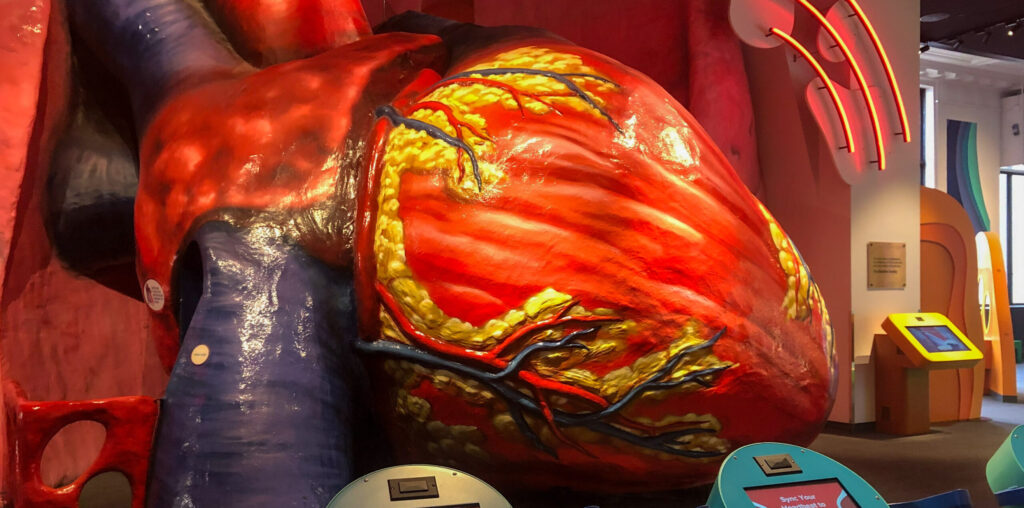An iconic Philly exhibit is back after a six-month hiatus.
The Franklin Institute’s Giant Heart will reopen to the public on Saturday, this time with technology elements to enhance the experience.
Despite a complete redesign of the surrounding galleries, the science museum’s “Body Odyssey” exhibit centerpiece — a childhood favorite for almost anyone who grew up in the region — remains largely untouched.
The museum’s design team wanted to add technology and interactive elements to the heart experience without changing its historical significance, Abby Bysshe, chief experience and strategy officer at the Franklin Institute, told Technical.ly.
“We didn’t want to do anything physical to the giant heart,” Bysshe said. “That’s an experience in itself, but we wanted to do something additive in that experience.”
The $8.5 million human body exhibit is split into three galleries across 8,500 square feet about body systems, medical technology and mental health.

Updates to the body exhibit coincide with the Franklin Institute’s 200th anniversary this year. The museum launched a complete redesign in 2018, with plans to install six new exhibits over the next several years.
Last fall, the first of those exhibits “Wondrous Space” opened with interactive exhibits about space and space travel. The “Body Odyssey” exhibit will open at the same time as the Hamilton Collections Gallery, which features the Baldwin 60000 Locomotive and over 500 innovation-related artifacts from the museum’s collections.
Appealing to the exhibit’s nostalgia with subtle tech upgrades
Visitors can still walk through the Giant Heart on the same pathway as a blood cell to the soundtrack of heartbeats.
The museum added stations for people to add their heartbeats to the experience. Visitors hold onto two sensors to record their heartbeats and heart rate, the museum averages it out among all the guests and that’s what visitors hear while walking through.
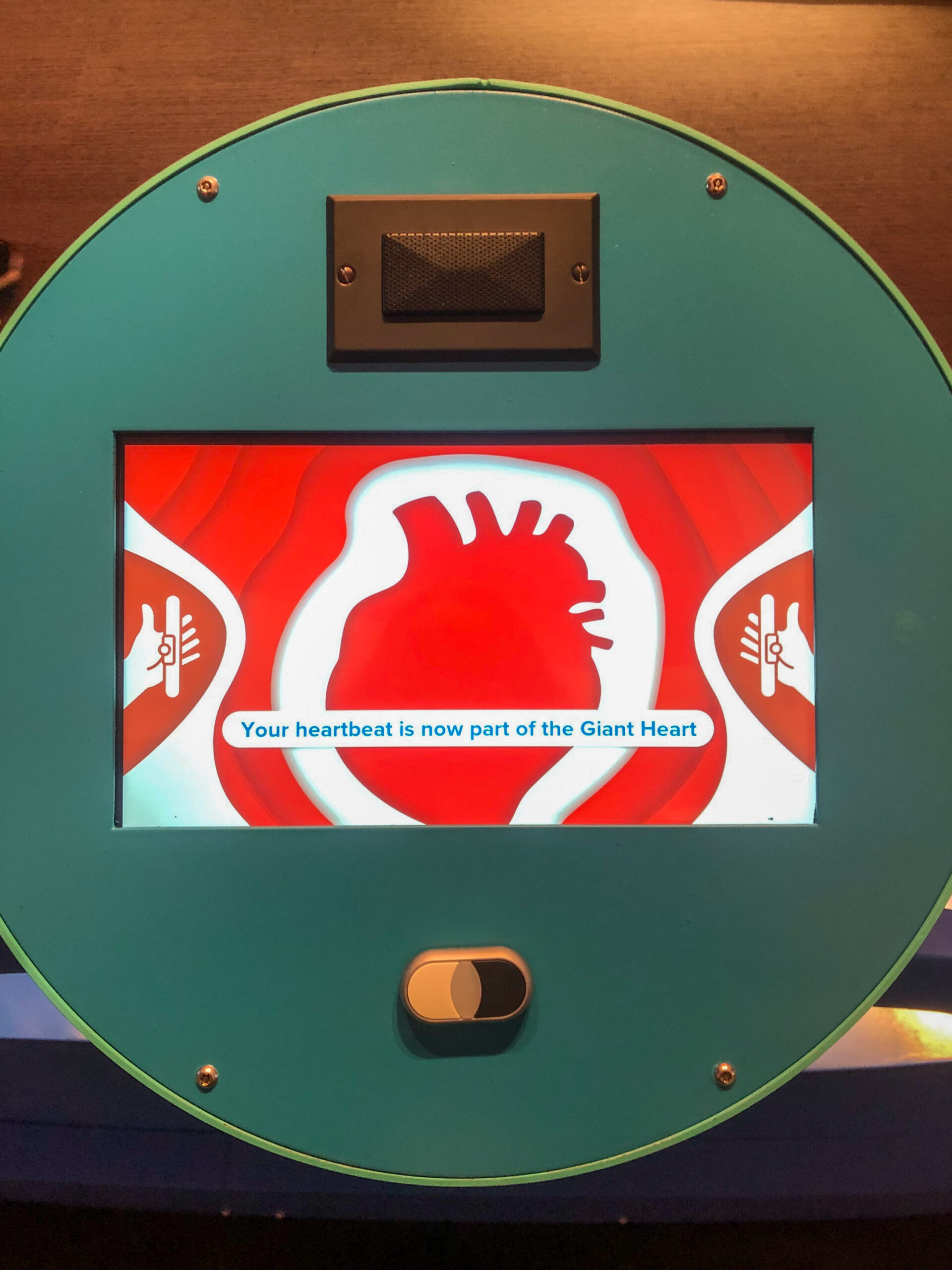
It also added a virtual giant heart tour right next to the main exhibit to make the heart more accessible for people who can’t walk through it, said Dan Picard, creative director and co-owner of the experiential design firm MDSX, who worked on the exhibit.
“Those are just fun ways of not taking away from it, just augmenting and adding a different layer of experience to it,” Picard said.
The design team kept other parts of the old body exhibit, too, like the dissection stage and an interactive that tells visitors how much blood is in their body. Those activities were always popular, but they needed tech and design updates, Bysshe said.
“Adding a lot of color, adding a lot of interactivity, really trying to meet that experience where it is, so that the rest of the gallery supports that experience,” Bysshe said.
The tech behind the Franklin Institute’s interactive exhibits
The exhibit’s design team wanted to create activities that play off of people’s existing heartbeats, hearing, sight and movements, Bysshe said.
The main room features interactive exhibits related to the human body’s functions, including the brain, senses, microbiome and infections. Each section features touchscreen tablets and other games that visitors can interact with. One activity uses sensors to trace your movements and project them onto screens in the form of your skeletal, muscular and circulatory systems.
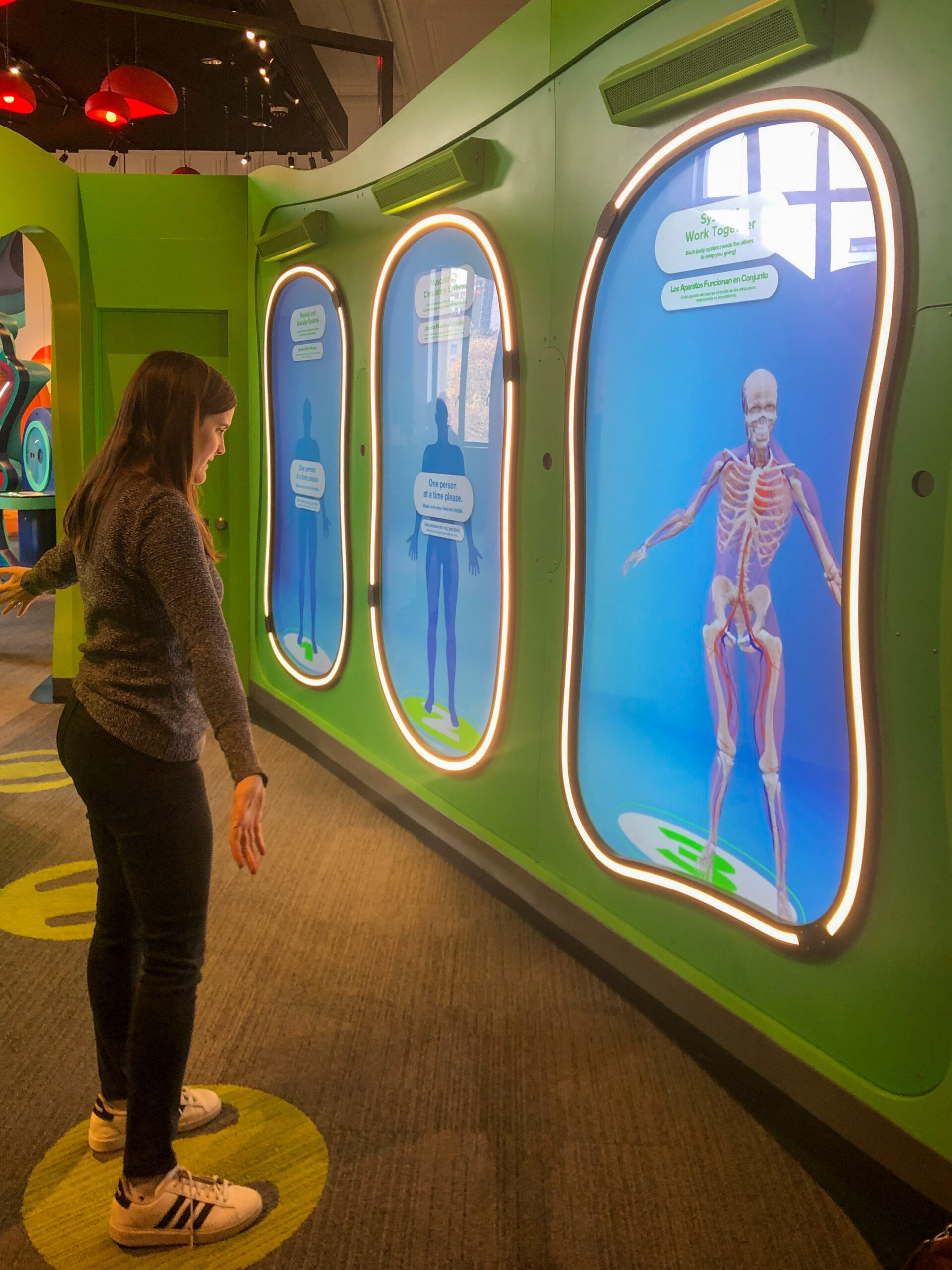
The second room’s exhibits relate to medical technology and sports technology. Interactive tablets share information about how medical professionals use AI as a diagnostic tool, how bionic prosthetics work and other advancements in medicine.
Visitors can even test out robotic arms, in an exhibit that features videos and information about how doctors use them in surgery.
The interactive elements don’t stop there. Some of the activities in the mental health gallery ask visitors to answer questions, draw pictures or fill out surveys.
“In this gallery specifically, it’s like trying to get a little bit of camaraderie or community out of it,” said Picard. “Especially on the topic of well-being, you really want to find ways of connecting holistically.”
Scroll down for more pics from the new setup.
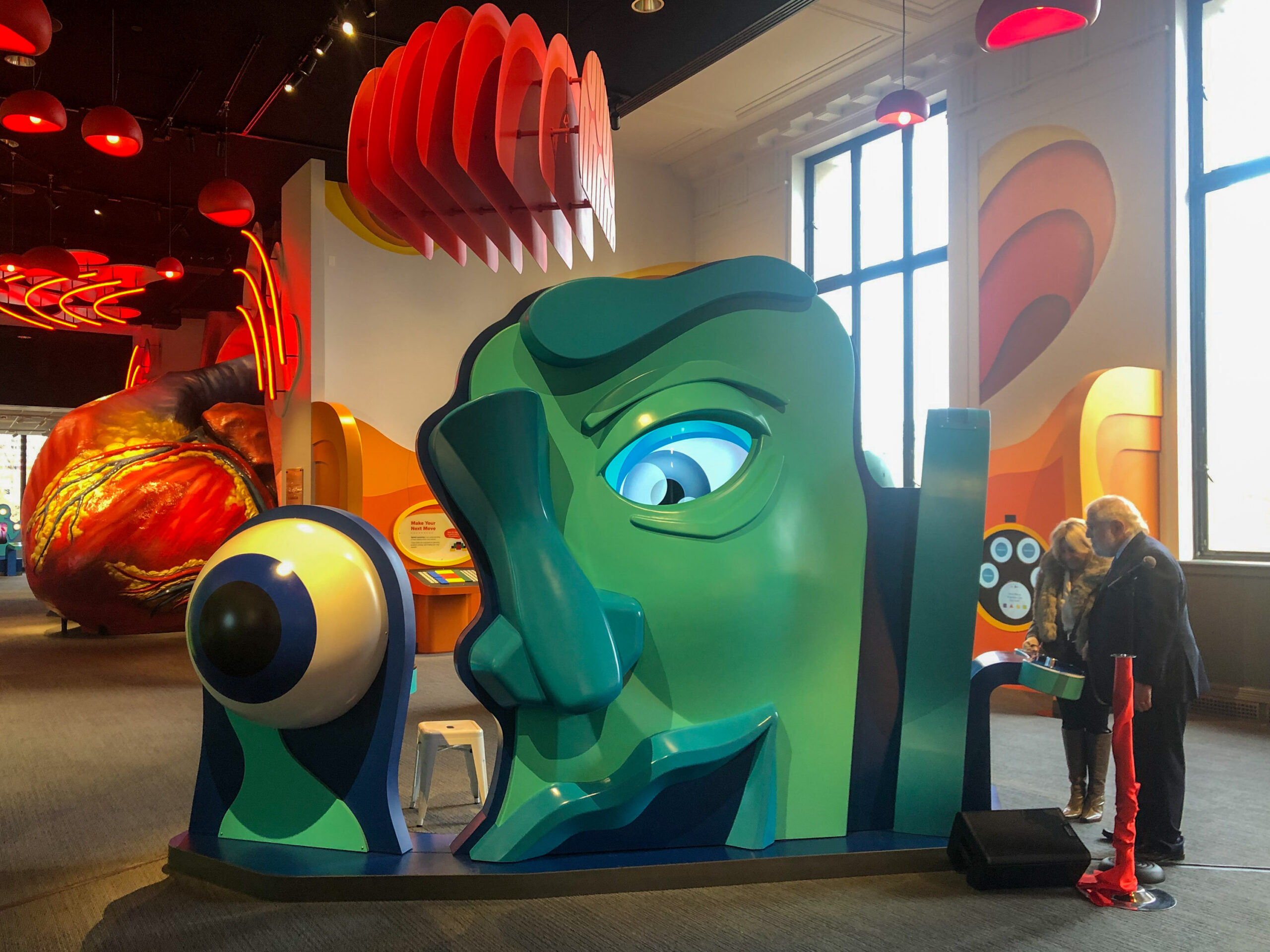
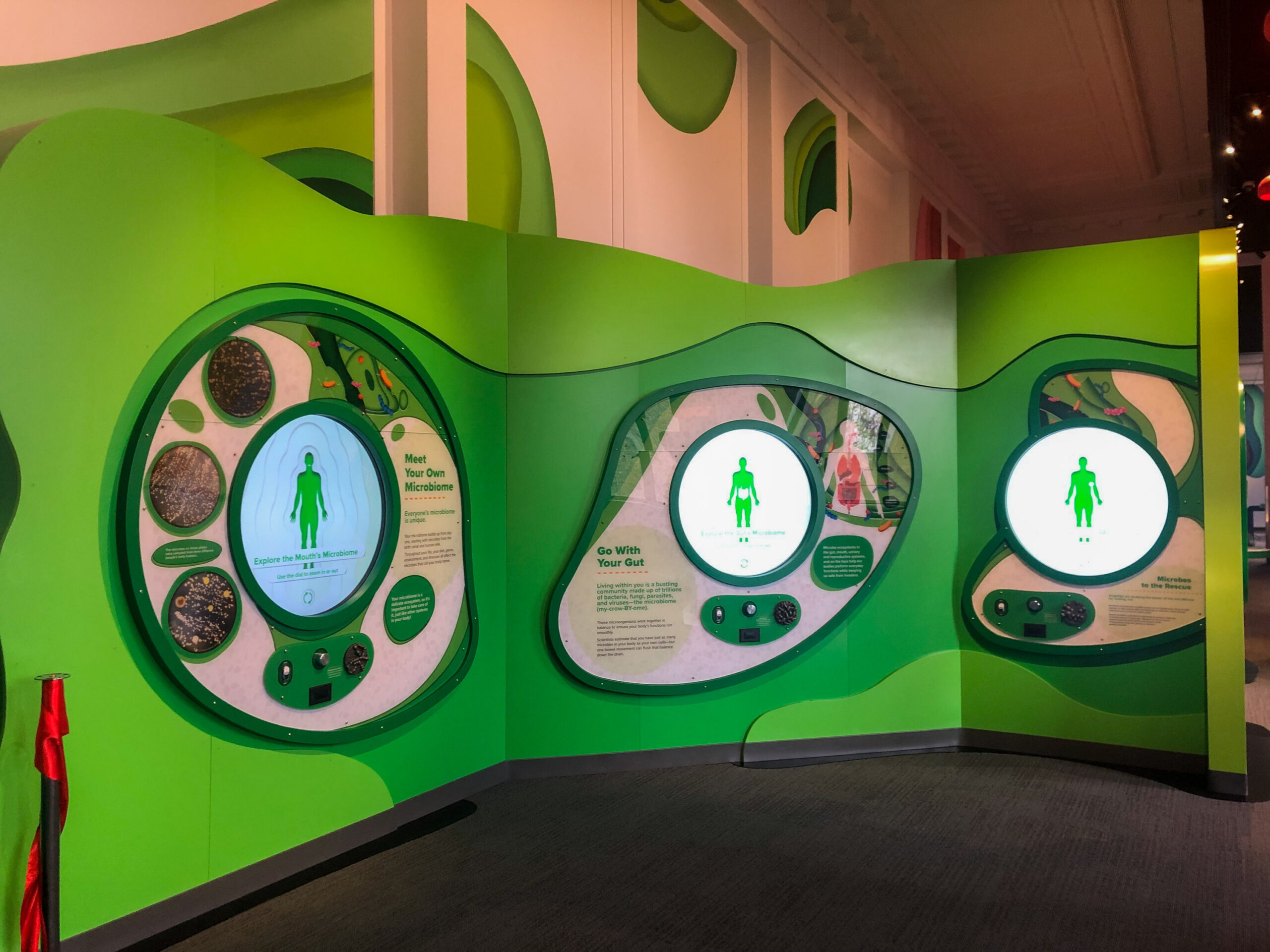
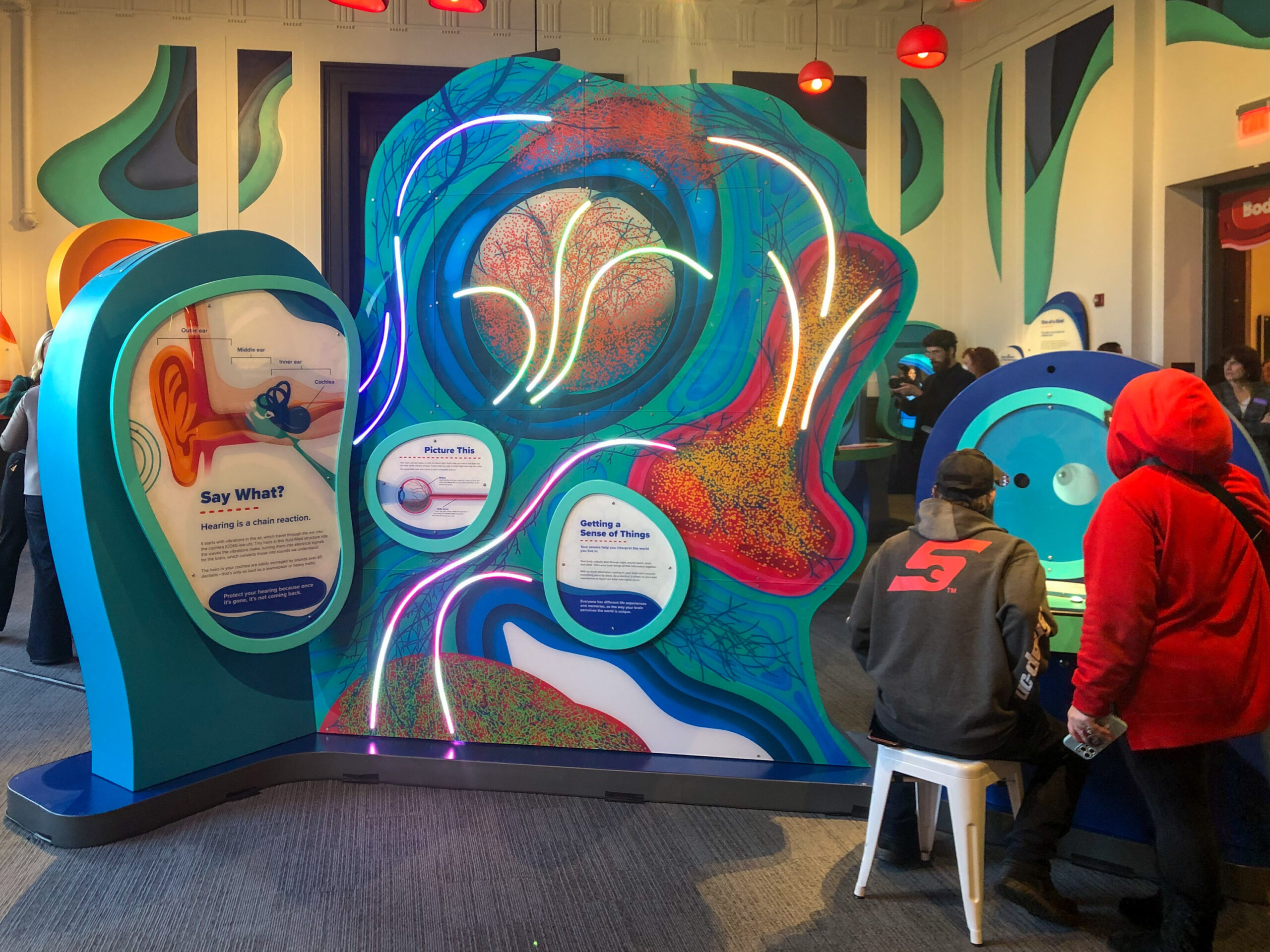
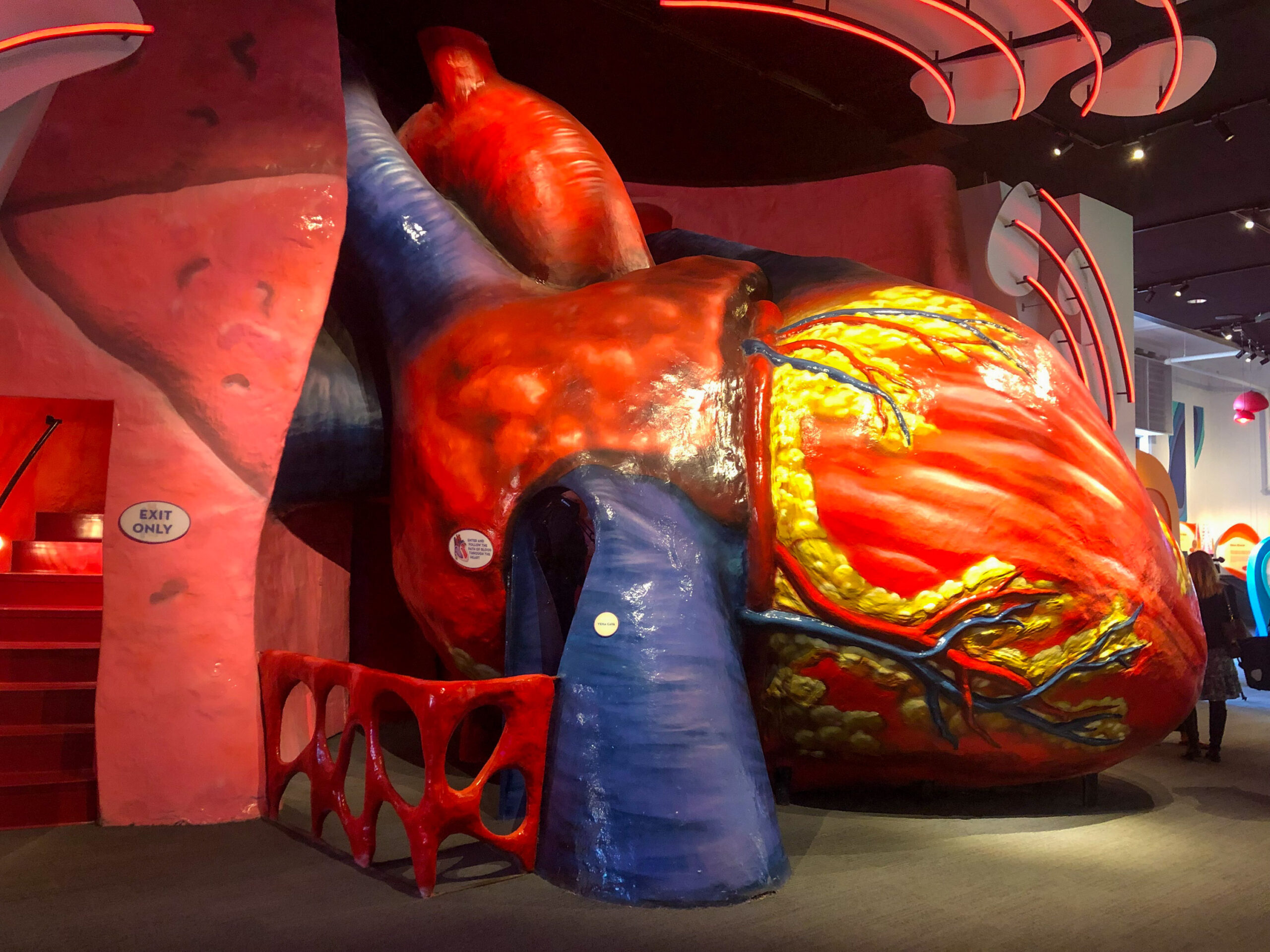
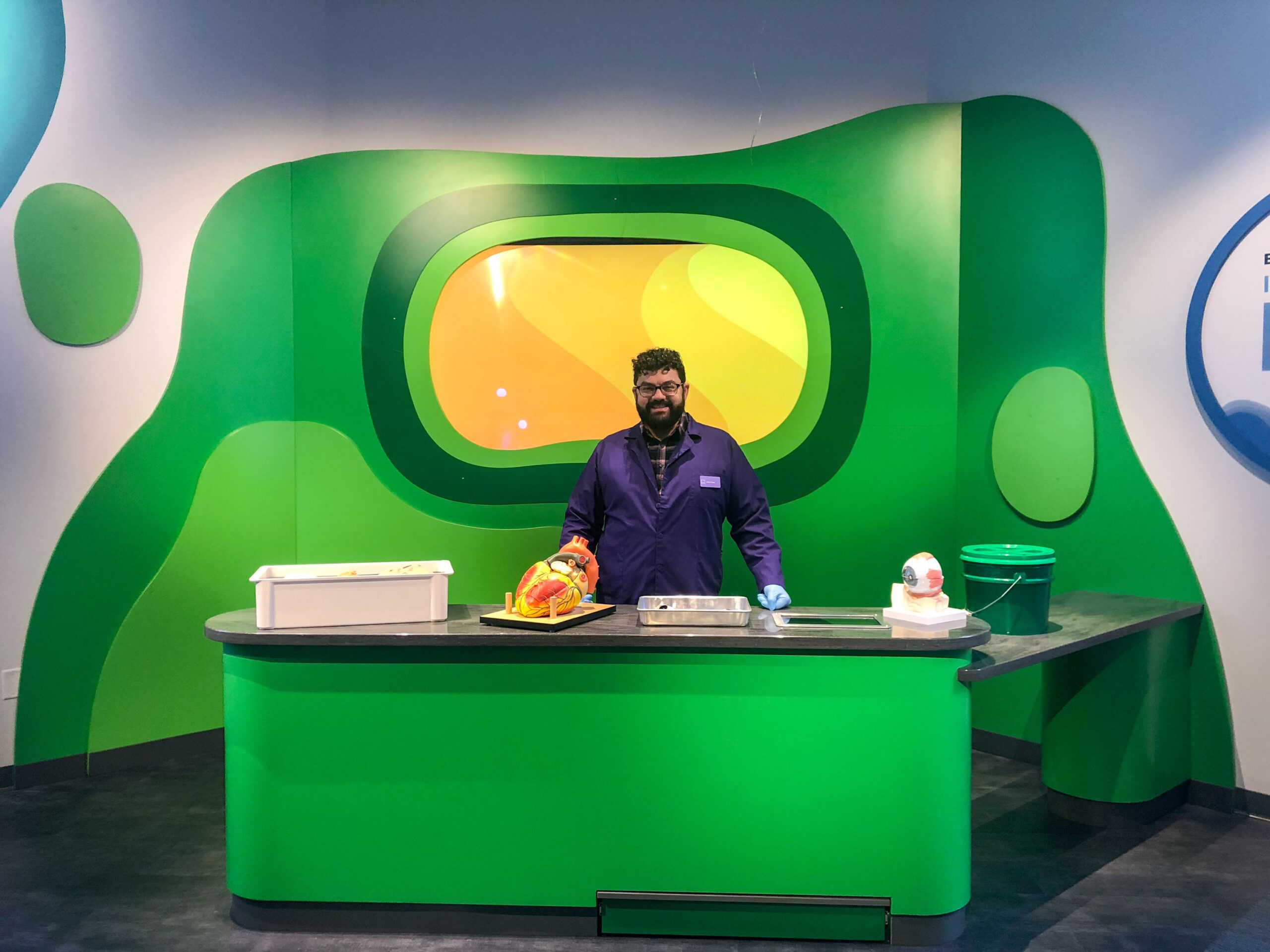
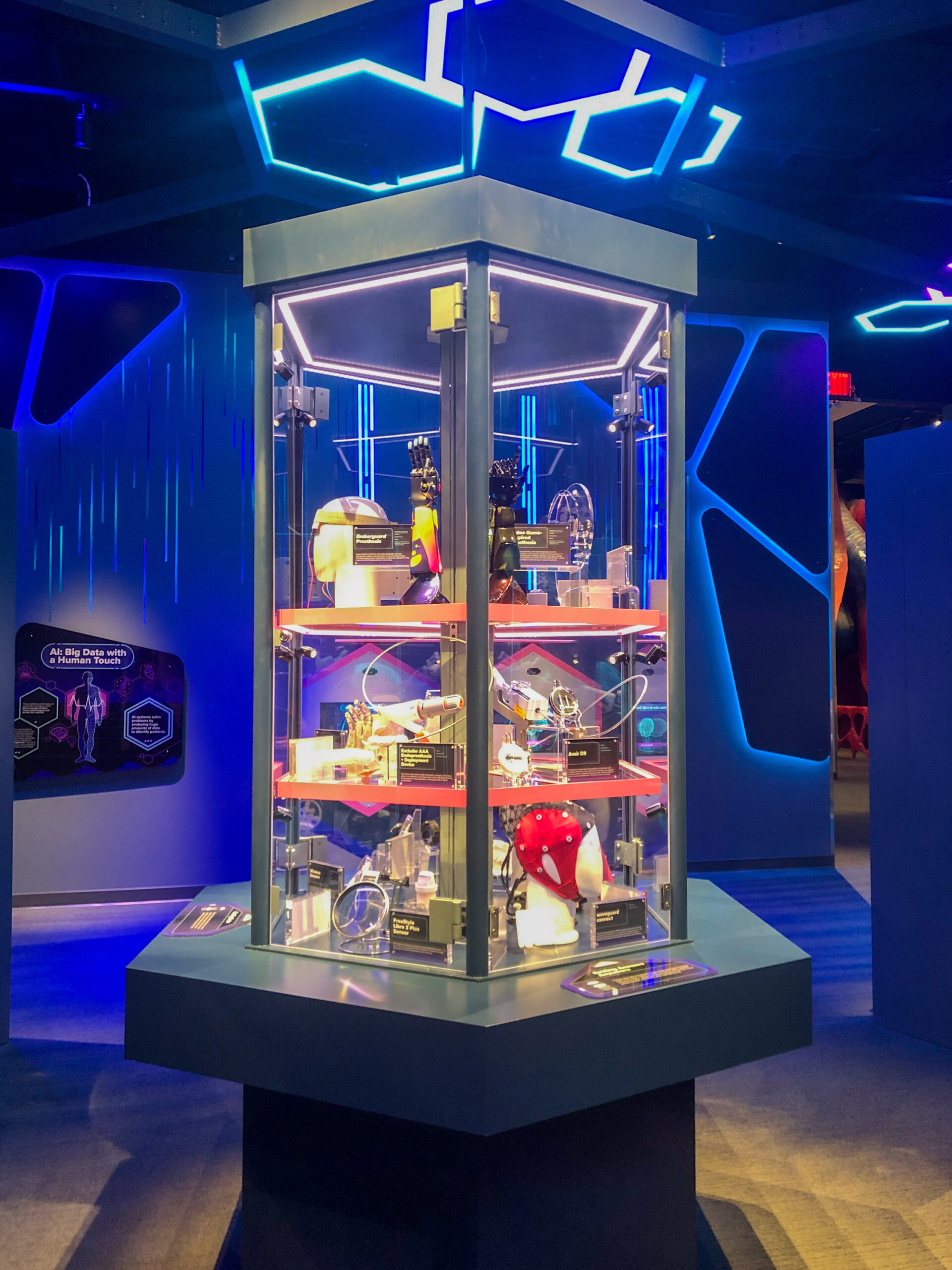
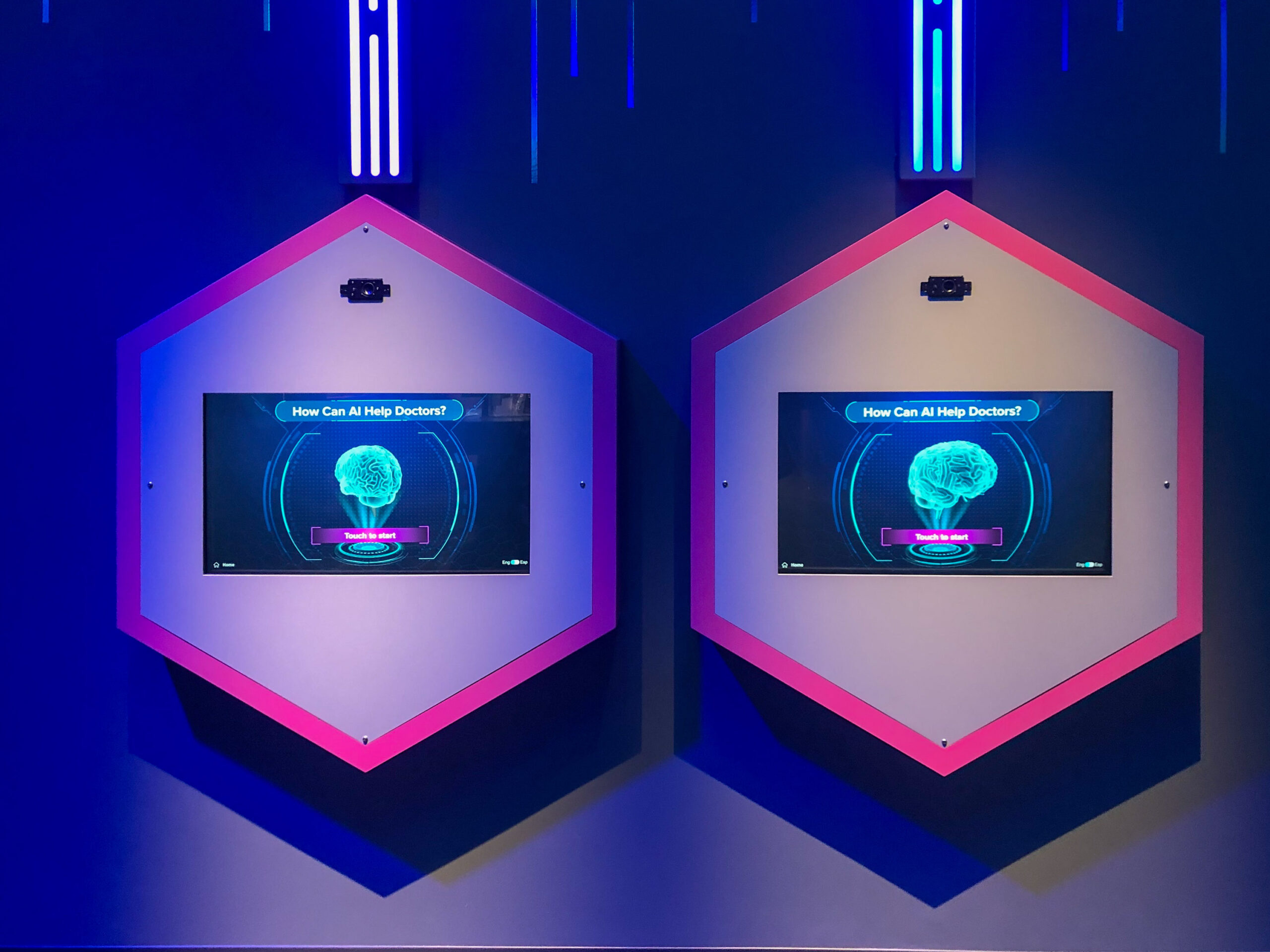
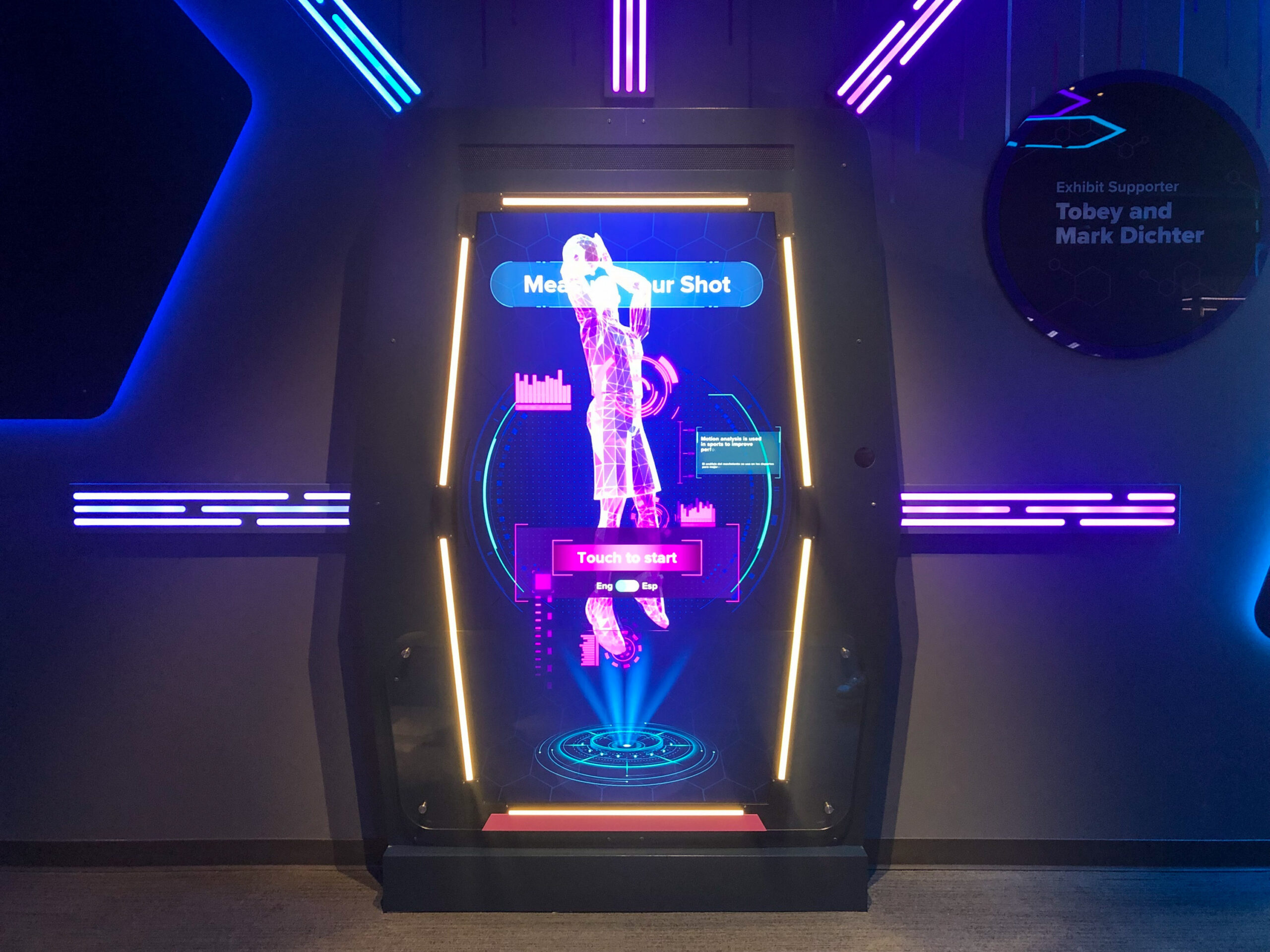
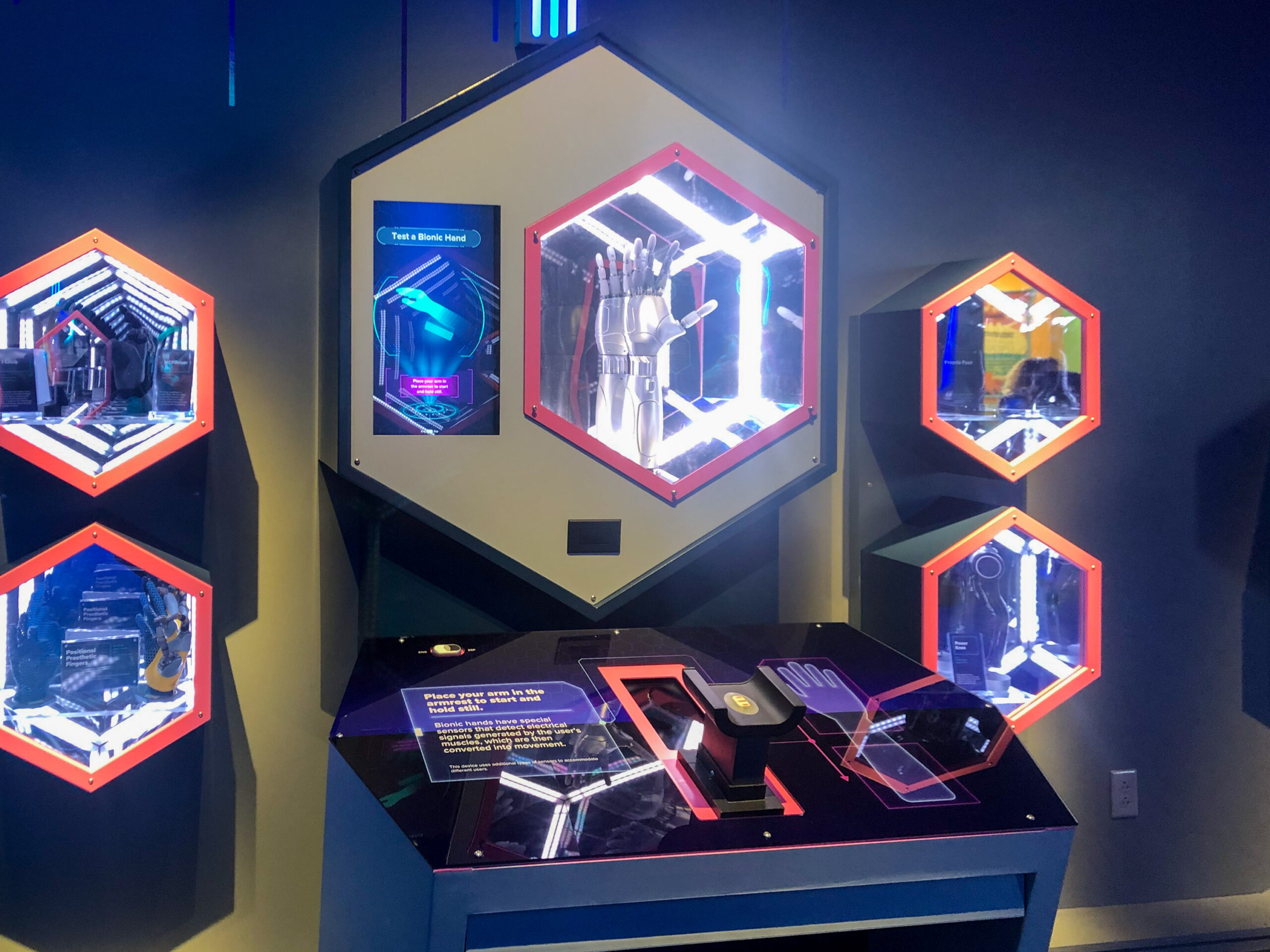
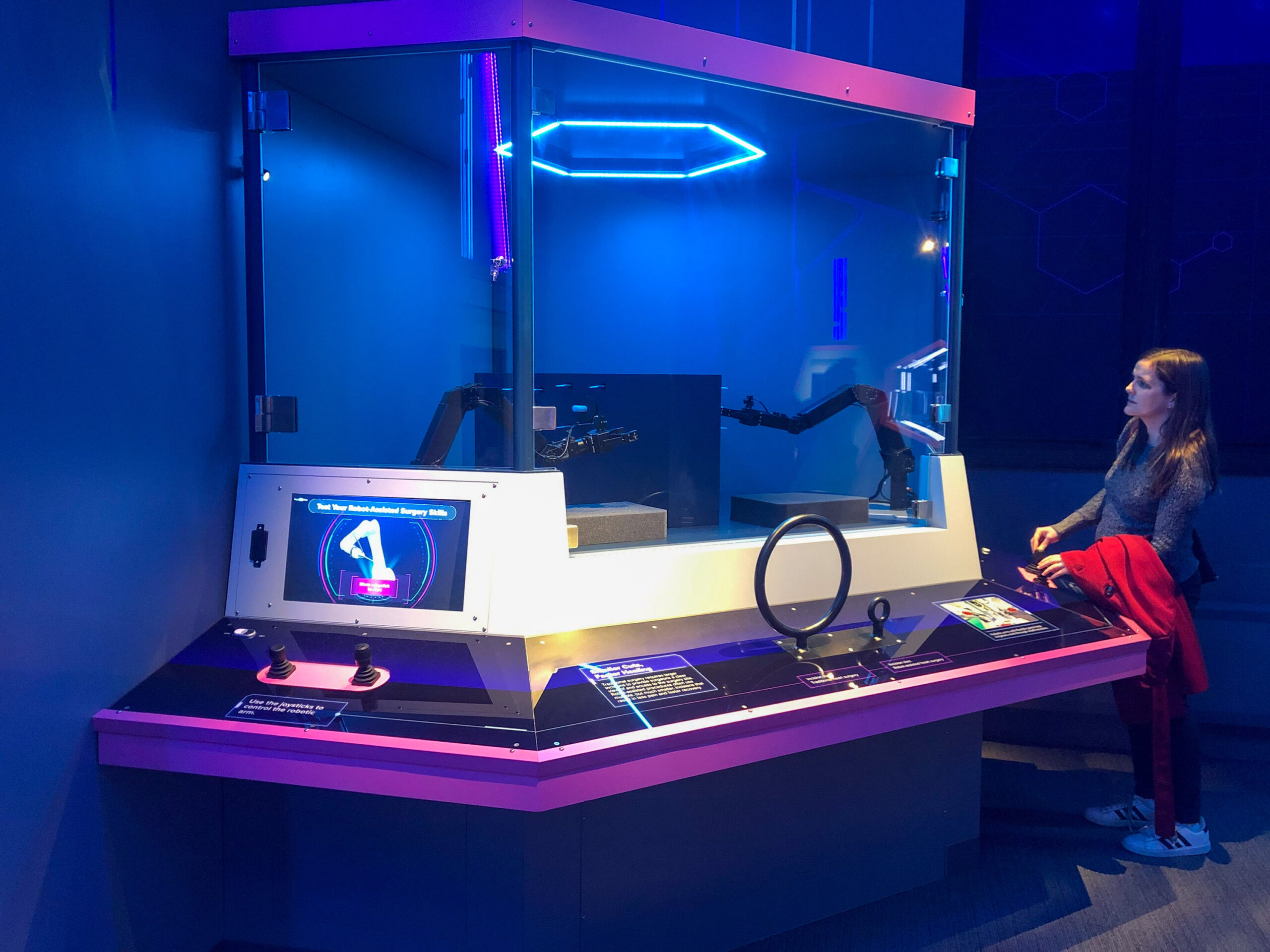
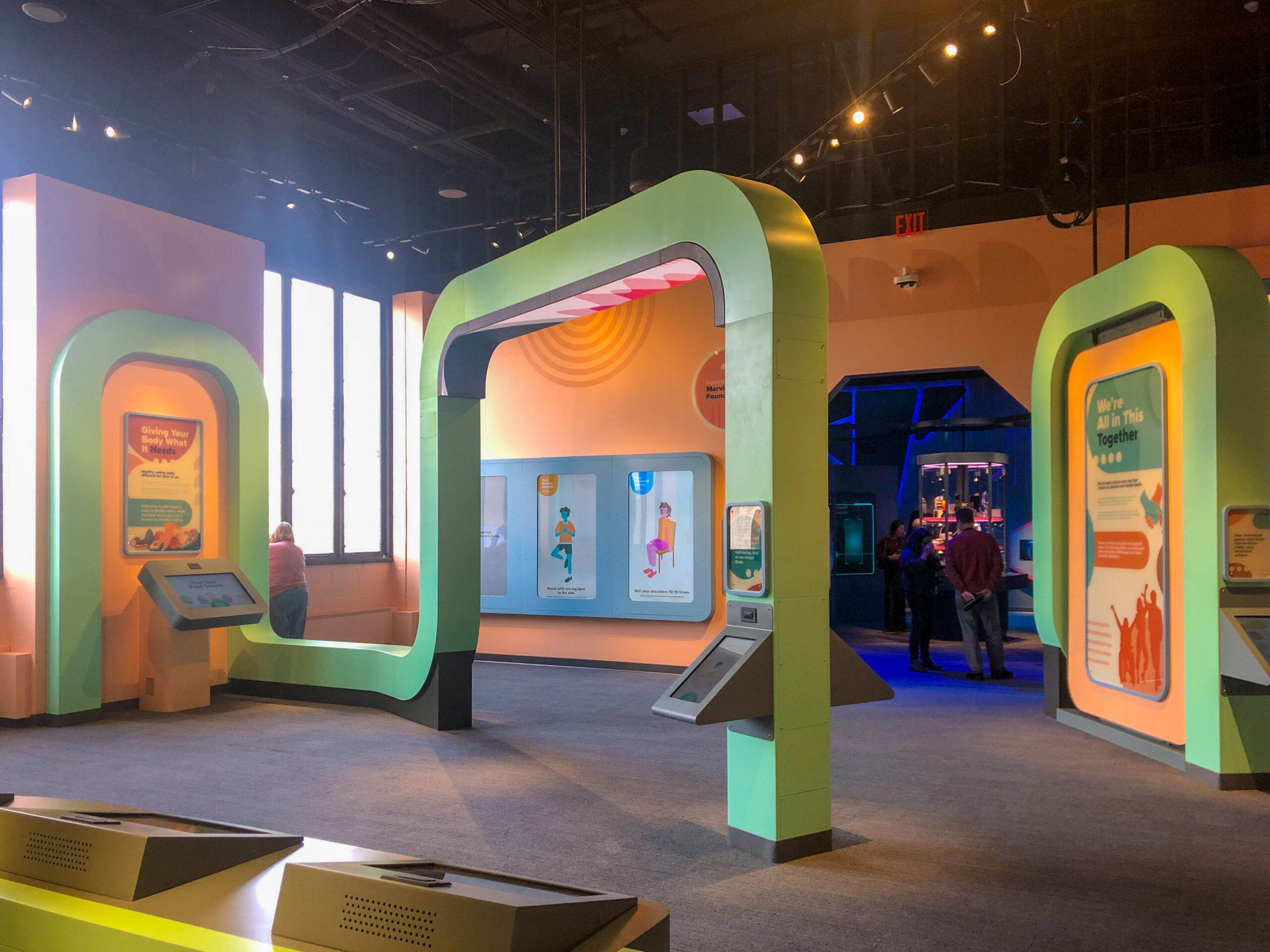
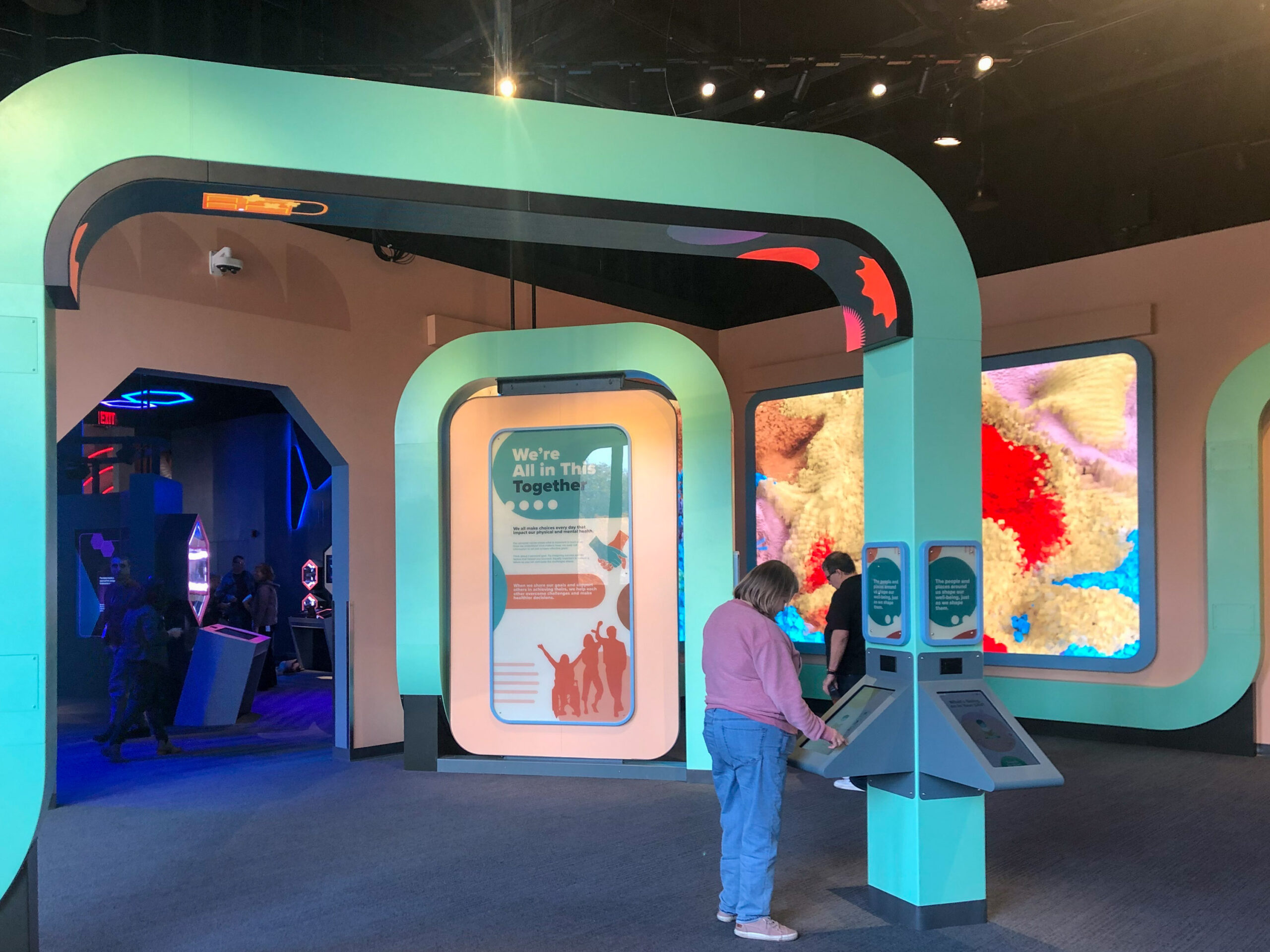
Sarah Huffman is a 2022-2024 corps member for Report for America, an initiative of The Groundtruth Project that pairs young journalists with local newsrooms. This position is supported by the Lenfest Institute for Journalism.
Franklin Institute
